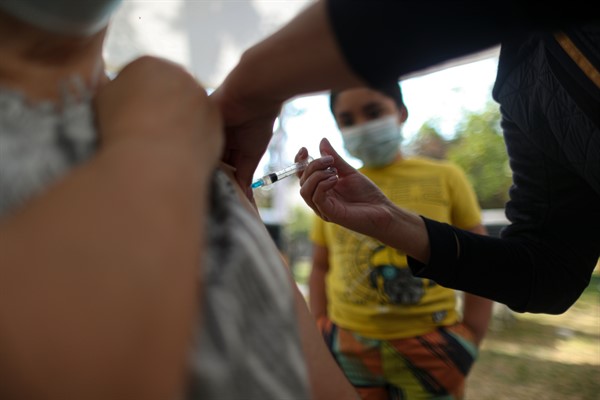Before a recent spike in COVID-19 cases, Chile was being lauded in the international press for its remarkable progress in vaccinating its population against the coronavirus. Soaring caseloads in recent weeks have dampened that narrative of success, but the fact remains that this small, relatively well-off Latin American nation is moving faster to inoculate its citizens than almost any other country in the world. Meanwhile, nearby Paraguay, where scarce shots generated public outrage against the government’s handling of the pandemic, has emerged in the media as a poster child of Latin America’s poor performers.
Both countries share common features with their neighbors. There are other South American nations that could be matching Chile’s success, but aren’t. And Paraguay is not the only country in the region that is desperate for shots, or the only South American country experiencing political turmoil related to its pandemic woes. But both Chile and Paraguay also display unique features that are playing a role in their disparate vaccination outcomes.
Chile’s vaccination success so far has been well documented. More than one-third of its population has received at least a first dose of the vaccine, and the country has administered 56 doses per 100 people as of April 1, one of the highest vaccination rates in the world. Chile benefits from an extensive public health system and a ready-to-go national immunization program. Other comparatively well-off South American countries, such as Brazil and Argentina, have similar advantages but lack sufficient supplies of COVID-19 shots to immunize nearly as much of their populations.

